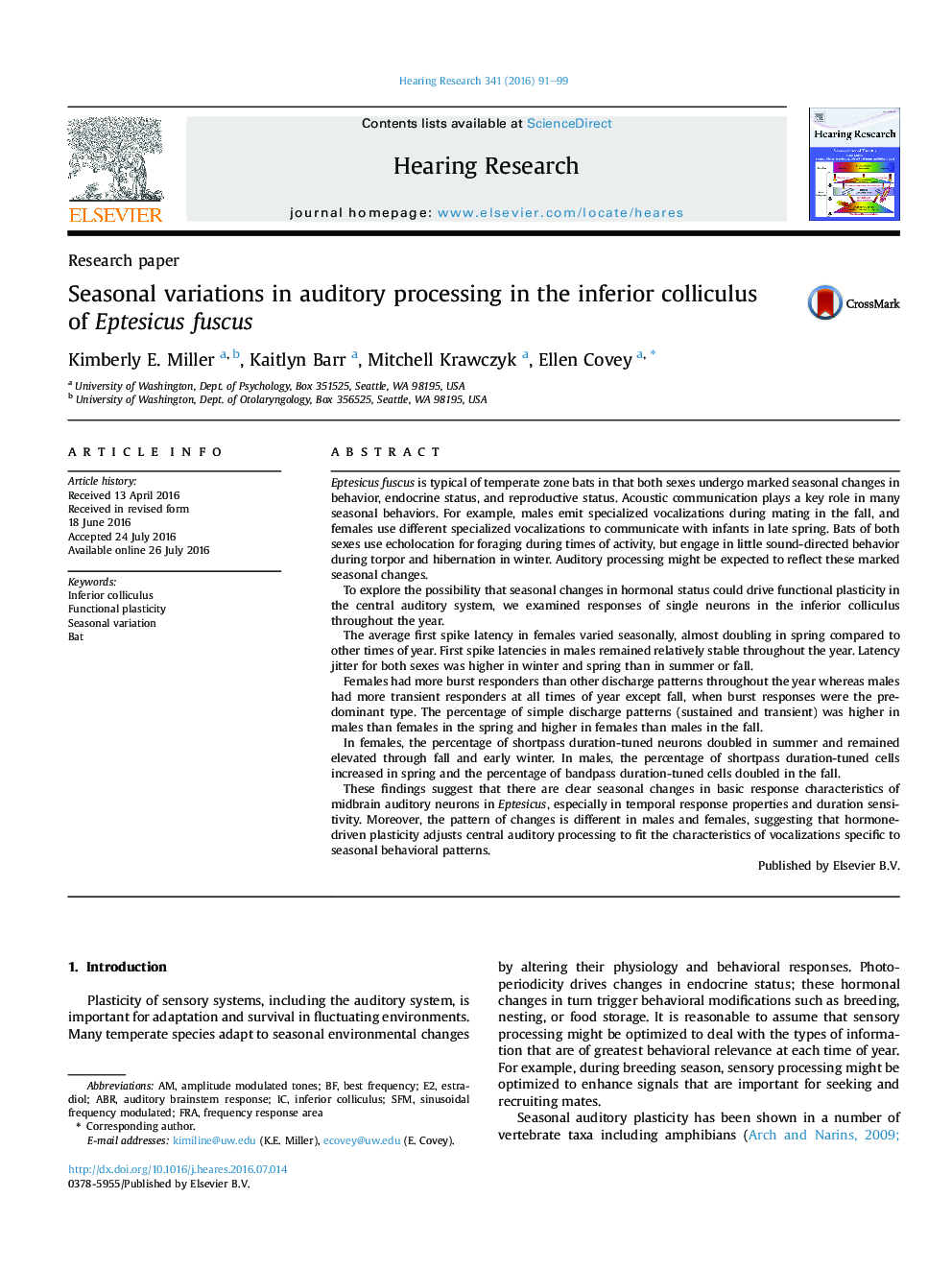| کد مقاله | کد نشریه | سال انتشار | مقاله انگلیسی | نسخه تمام متن |
|---|---|---|---|---|
| 6286870 | 1615559 | 2016 | 9 صفحه PDF | دانلود رایگان |

- Auditory responses in the midbrain of the big brown bat show seasonal changes; this pattern varies between the sexes.
- The largest seasonal differences are in response latency and jitter, which are greatest for females in spring.
- Other properties that vary seasonally are discharge pattern distribution and duration sensitivity.
- Changes in auditory processing may reflect an optimization to encode behaviorally relevant stimuli throughout the year.
Eptesicus fuscus is typical of temperate zone bats in that both sexes undergo marked seasonal changes in behavior, endocrine status, and reproductive status. Acoustic communication plays a key role in many seasonal behaviors. For example, males emit specialized vocalizations during mating in the fall, and females use different specialized vocalizations to communicate with infants in late spring. Bats of both sexes use echolocation for foraging during times of activity, but engage in little sound-directed behavior during torpor and hibernation in winter. Auditory processing might be expected to reflect these marked seasonal changes.To explore the possibility that seasonal changes in hormonal status could drive functional plasticity in the central auditory system, we examined responses of single neurons in the inferior colliculus throughout the year.The average first spike latency in females varied seasonally, almost doubling in spring compared to other times of year. First spike latencies in males remained relatively stable throughout the year. Latency jitter for both sexes was higher in winter and spring than in summer or fall.Females had more burst responders than other discharge patterns throughout the year whereas males had more transient responders at all times of year except fall, when burst responses were the predominant type. The percentage of simple discharge patterns (sustained and transient) was higher in males than females in the spring and higher in females than males in the fall.In females, the percentage of shortpass duration-tuned neurons doubled in summer and remained elevated through fall and early winter. In males, the percentage of shortpass duration-tuned cells increased in spring and the percentage of bandpass duration-tuned cells doubled in the fall.These findings suggest that there are clear seasonal changes in basic response characteristics of midbrain auditory neurons in Eptesicus, especially in temporal response properties and duration sensitivity. Moreover, the pattern of changes is different in males and females, suggesting that hormone-driven plasticity adjusts central auditory processing to fit the characteristics of vocalizations specific to seasonal behavioral patterns.
Journal: Hearing Research - Volume 341, November 2016, Pages 91-99